Helping you find compassion
in a chaotic world.
my mind keeps running off to dark corners
and coming back with reasons for
why i am not enough
-Rupi Kaur
Life is hard. We all have suffering, and sometimes there is nothing that will truly make the situation better.
Regardless of the struggle, mental health issue, or pain you are feeling, know that you are valuable. You are worthy just because you exist. You do not have to do anything to earn this; it is your birthright.
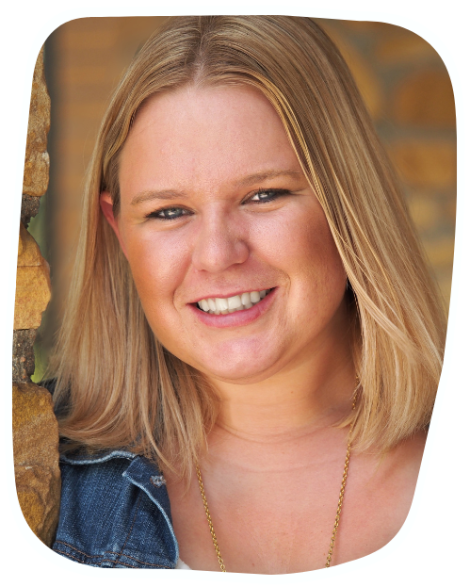
I offer no magical potion or cure.
My work centers around sitting with those who are suffering,
and together, helping both of us create a more compassionate and mindful life.
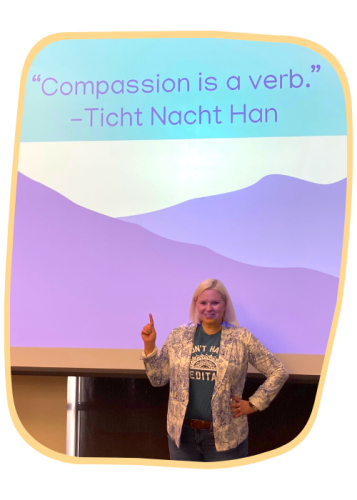
About Megan
Hi, I’m Megan.
I’m a public speaking lecturer at Texas A&M University-San Antonio, an award-winning speechwriter, and a mindfulness meditation teacher. Above all else, I believe all humans are inherently valuable and worthy of love and compassion.
My mission is to help my students, colleagues, and community experience compassion in a chaotic world. One of the greatest ways I know how to do this is through mindfulness meditation.
My Mental Health and Well-Being Journey
Like so many others, I have battled anxiety and depression my entire life.
By my twenties, I found myself deeply unhappy. I didn’t know how to fix it but thought that a higher salary, better boyfriend, nicer apartment, more education, or lower weight could point me in the right direction. None of them did.
After dropping out of a Ph.D. program, I moved to California for a change of pace and a different lifestyle. During my fifth year teaching at California Polytechnic State University, I was hit with extreme burnout that left me unable to function. At the recommendation of a therapist, I checked into a three-month outpatient therapy program.
During my time in the program, I learned about dialectical behavior therapy (DBT) and was introduced to mindfulness meditation and self-compassion. I would carry these concepts with me, and they would shape me as a person moving forward.
Today, treating myself and others with empathy and compassion is a touchstone in my life. It is at the forefront of everything I do and guides my parenting, teaching, and interactions with everyone I meet.
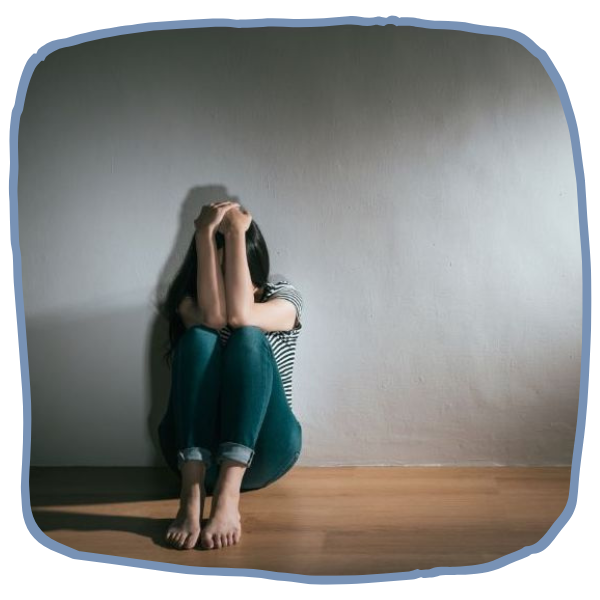
Compassionate Pedagogy
"The word "love” is most often defined as a noun, yet all the more astute theorists of love acknowledge that we would all love better if we used it as a verb." -bell hooks
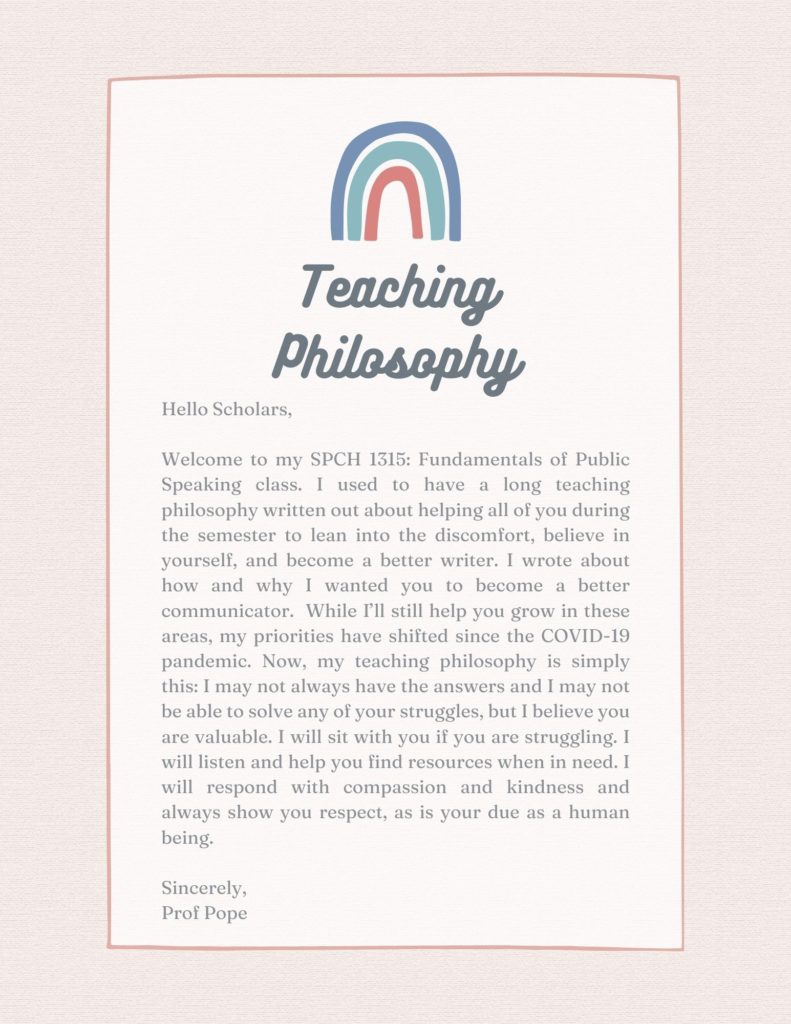 During the pandemic, everything was more difficult, and we all felt the weight of increased stress and loneliness.
During the pandemic, everything was more difficult, and we all felt the weight of increased stress and loneliness.
I started to see my students slipping away from me. The percentage of my students who were struggling to turn assignments in and stay motivated while handling the difficulties of life began to increase. I saw more students dropping classes and receiving Fs than ever before. It was clear that they couldn’t cope with the internal and external crises they were facing.
I started to think about them as complex and unique human beings rather than just students and helping them navigate their struggles began to matter just as much or more than making sure the learning outcomes were met. I realized I needed to meet each student where they were and treat the whole student holistically, and this realization drove me to adjust my teaching philosophy.
In researching the ties between mental health and higher education, I found that compassionate pedagogy was the answer. While many academics have written about compassionate pedagogy, I believe compassionate pedagogy is simply viewing each student–and yourself–as a being deserving of loving kindness, and because of this, all interactions should begin with empathy, mindfulness, curiosity, and openness.
At its core, compassionate pedagogy is about infusing the educational experience with what we know about mental health and well-being to enhance the experience of every student. It’s more than telling a student to turn in a paper; it’s about practicing empathy, asking how they are, and even walking them to the counseling center if they need it.
Many of my students have heart-wrenching experiences that make me feel helpless and sad, and while I cannot solve their problems, I can sit with them, and offer them the only gift I know how to give: the knowledge that they are not alone and that I will show up for them. I can listen and remind them that simply existing is what makes them valuable and worthy of respect, empathy, and compassion. I make sure they know that whatever happens, it’s okay; failing does not make them a failure. Reminding students that they are worthy regardless of any outcome allows them to digest difficult information more easily and leads to a better, smoother experience in the classroom. In an analogy from the Buddhist teacher, Thích Nhất Hạnh, he describes suffering as being like mud, and happiness as a lotus flower. You cannot have one without the other. No mud, no lotus.
Because I noticed so many of my students experiencing increased suffering in the aftermath of the pandemic, I wanted to do something more to help. In addition to holding space for them and listening, I also wanted to introduce them to the practice of mindfulness meditation, which allows us to sit with our suffering and practice self-compassion. I cannot solve their problems, but I can sit with them in the mud.
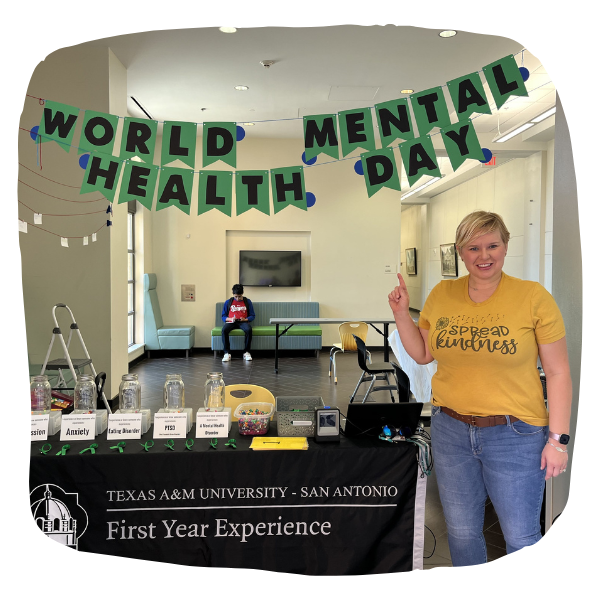
My Meditation Journey
Although I’ve been meditating for nearly a decade, I’m what you would call a “skeptical convert.”
During my three-month outpatient therapy program, I attended group sessions on several different topics including meditation. I hated my meditation class to the point that I chose to leave the room each time.
But slowly, over time, as I learned to sit still with my thoughts, I became less afraid of them and began to befriend them with kindness and curiosity.
When I began meditating in 2015, I discovered Pico Iyer and Thích Nhất Hạnh, whose works taught me to slow down, be still, and care for myself. Over time, things began to change for me. Meditation and mindfulness didn’t relieve my suffering or depression, but they did make them–and life as a whole–easier to bear.
Mindfulness is the best way to be with our suffering without being overwhelmed by it. Mindfulness is the capacity to dwell in the present moment.
-Thích Nhất Hạnh


Meditation Certification
Today, I practice mindfulness meditation regularly to allow myself the space to show compassion both to others and myself. I’ve even begun to offer it to my students, as studies have shown that mindfulness meditation helps with stress, depression, anxiety, and communication anxiety.
In the summer of 2022, I received my mindfulness meditation teacher certification at The Center for Koru Mindfulness. This evidence-based curriculum and teacher certification program was developed at Duke University with the specific goal of enabling professionals to teach mindfulness to emerging adults.
Over the next few years, I’ll be bringing what I learned through the certification process to those on campus and in our community who need it. My goal is to reach every student at Texas A&M University-San Antonio to help them find ways to move through their suffering and deal with life.
Work With Me
When your mind is running off to dark corners and you’re ruminating on all the reasons why you’re not enough, know you’re not alone. The darkness isn’t so dark when someone holds the flashlight up and reminds you that they’re with you. Work with me, and let me sit with you in the dark. Let me empower you to do the same for your students.
I believe in this material and its benefits and would love to share it with your group or organization. To inquire about scheduling, please contact me.
- Book me for a compassionate pedagogy or compassionate communication keynote or workshop
- Schedule a mindfulness meditation class or workshop
If you are in crisis, please call or text 988, or click here.
